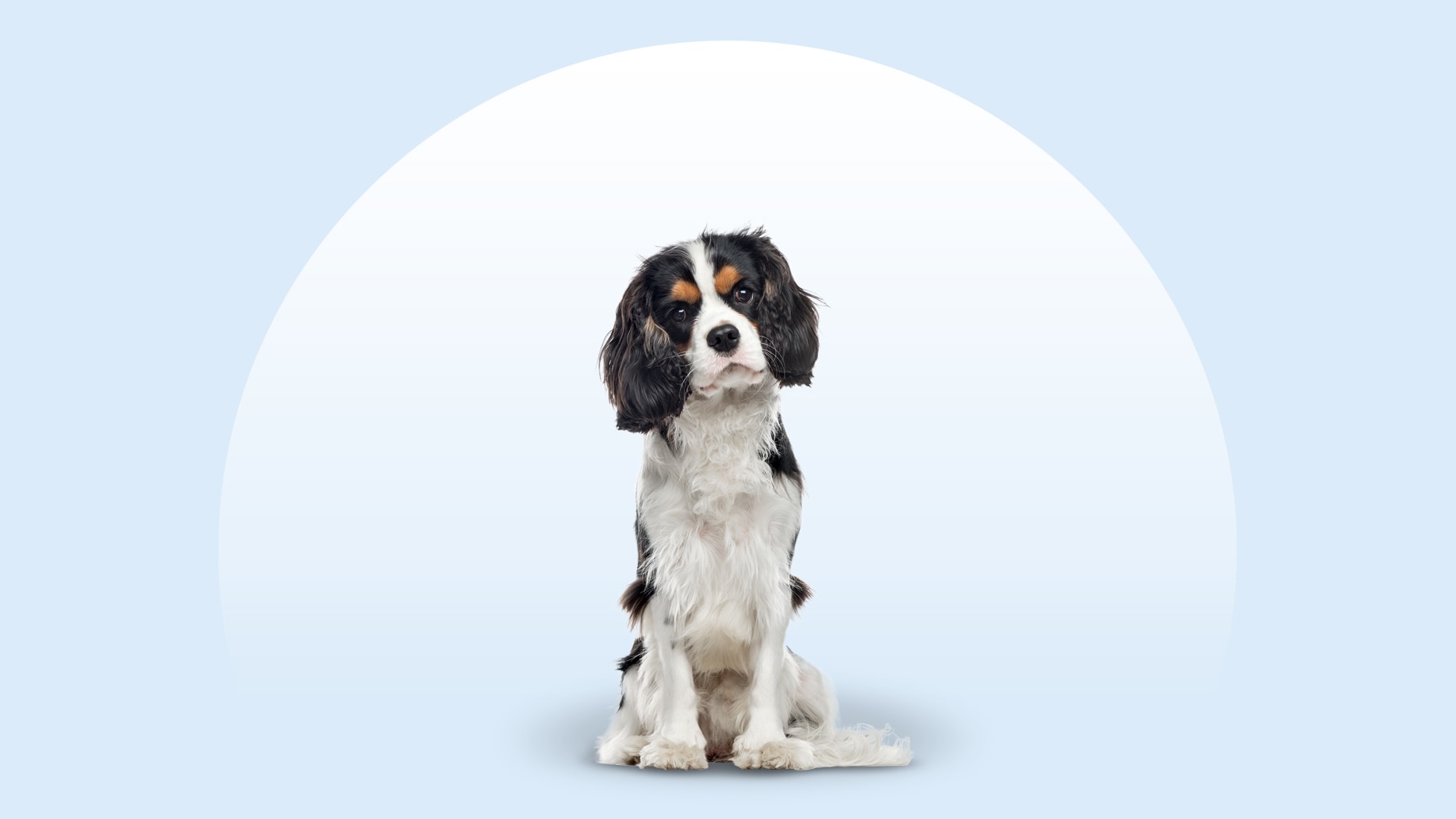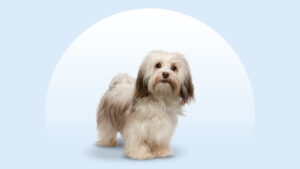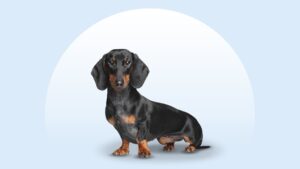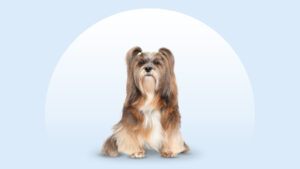Cavalier King Charles Spaniel
Updated December 15, 2025
Cavalier King Charles Spaniel
Updated December 15, 2025
The Cavalier King Charles Spaniel is a delightfully sweet and easygoing dog who’s down for whatever you’d like to do. As a sporty dog who enjoys fun romps outdoors, they’re also exceptionally smart pups who relish the attention and snuggles a devoted best friend can offer.
Bubbly, Happy-Go-Lucky, Sporty
13–18 pounds
12–13 inches
12–15 years
Blenheim, Tricolor, Ruby, Black and Tan
No one’s saying the Cavalier King Charles Spaniel is the most charming dog you’ll ever meet, but let’s be honest: It’s a real possibility.
These puppy-eyed social butterflies are basically mood boosters in canine form. Their ears flop in the wind when they run, their feathery tail swishes behind them, and their overall good nature just adds to their appeal. Have you ever met a more delightful creature? Doubtful.
Best of all, at the top of this pup’s to-do list is to make their best friend (that’s you) happy. Whether you’re making dinner, hosting friends, or going to the dog park, the eager, bubbly Cavalier will right by your side, making each day better.
Cavalier King Charles Spaniel Characteristics
Cavalier King Charles Spaniel Appearance
Cavalier King Charles Spaniels have big, brown eyes and floppy ears. Their tails wag happily, always ready to tag along wherever you may go. Their lovely, medium-length coat comes in four color patterns.

- Ears
Cavalier King Charles Spaniel ears are long and flowing. They have loads of feathering and, when Cavaliers are alert, their ears shift a bit forward to frame the face.
- Eyes
Their warm, dark brown eyes give off a subtle sheen. They’re large, round, and set wide apart.
- Nose
Cavalier noses are slightly tapered and black.
- Coat Length
Their coat is medium-length and super silky. The fur doesn’t have any curl, though it may be a little wavy.
- Coat Color
Cavalier King Charles Spaniel colors come in four options: tricolor (black, white, and tan), black and tan, Blenheim (chestnut and white), or ruby. Ruby Cavalier King Charles Spaniels are a rich red.
- Tail
A Cavalier’s long, feathery tail is one of the cheeriest things about them. While some breeders once docked (or cut) tails in this breed, nowadays most of these active pups have their full tails intact. Many groups, including the American Veterinary Medical Association, oppose tail docking, and many countries as well as U.S. states have banned the practice.
Cavalier King Charles Spaniel Temperament
The Cavalier King Charles Spaniel is kind, bubbly, and playful. They’re a devoted best friend who needs someone equally doting.
They’re a true social butterfly who loves meeting new people, so if you’re the type of person who starts conversations with strangers, you have met your match. This dog’s sincerity, friendliness, and love for life make them a magnet for positivity and happiness.
This well-rounded pup needs a healthy mix of regular exercise (nothing too intense, but they do enjoy a fun romp outdoors) and relaxing at home. They are not above spending a lazy Saturday in bed (as long as potty breaks and regular walks are built in).
With their cheerful demeanor, it’s no surprise that Cavaliers get along well with both people (including strangers) and other animals (even cats). But because Cavalier King Charles Spaniels are a small dog breed, they may be shy around larger pups at first. Let them hang out in the “kiddie” dog park instead of the big one if the larger dogs are too intimidating.
How to Care for a Cavalier King Charles Spaniel
Grooming a Cavalier King Charles Spaniel is fairly low–maintenance, even with their lush coat. Because they enjoy snuggling in your lap, grooming is usually a fun bonding experience.
Grooming
Training
Diet
Exercise
Environment
Cavalier King Charles Spaniel Health
A typical Cavalier King Charles Spaniel lifespan is 12–15 years. Here are some of their common health issues to be aware of.
- Ear issues: A Cavalier King Charles Spaniel’s ears are long, fluffy, and adorable. But they can easily trap moisture inside, which can lead to infections. Thoroughly drying the ears after baths can help, but underlying allergies can also cause infections. If you think your pup has an ear infection, talk to your vet; they may recommend weekly ear cleaning to prevent infections, but medication may also be needed.
- Eye issues: Cavaliers can develop a handful of eye problems.
- Cataracts are a common eye problem, and they can be hereditary. Surgery is the go-to treatment.
- Progressive retinal atrophy is the degeneration of the retina that leads to blindness. While there is no treatment, dogs often adjust well to vision loss.
- Cavaliers may also experience an inherited condition called dry eye syndrome, where they can’t produce enough tears. This could lead to infection, ulcers, or blindness. Early diagnosis is crucial, and treatments may include antibiotics, anti-inflammatories, and/or daily ointments.
- Heart issues: Cavalier King Charles Spaniels are prone to heart murmurs and mitral valve disease, where the heart does not pump blood efficiently. A heart murmur is the earliest sign of mitral valve disease, but other symptoms include exercise intolerance, a cough, heavy breathing, and a decreased appetite. Prognosis depends on how severe the disease is when diagnosed.
- Hip dysplasia: Hip dysplasia is when the ball and socket of the hip and thigh bones doesn’t properly fit. It’s an inherited condition made worse if a pup is overweight. It eventually leads to arthritis and pain. More severe cases may require surgery, but it can also be treated with joint supplements, special diets, and/or physical therapy.
- Luxating patella: These pups can develop a luxating patella, where the kneecap slips out of place. You might notice that they do a little bunny hop or skip—this could be a symptom. It can be treated with supplements and meds if mild, though surgery may be necessary.
- Chiari-like malformation (CM) and syringomyelia (SM): SM is an inherited neurological condition (and a consequence of CM, common in Cavaliers) in which the cerebrospinal fluid is unevenly distributed. This causes abnormal sensations, pain, and weakness. Treatment focuses mainly on pain management.
Cavalier King Charles Spaniel History
With such a regal name, it’s not exactly a secret that the Cavalier King Charles Spaniel has a royal history. They’re named after King Charles I, a 17th-century British monarch who evidently had several spaniel-type dogs who went with him everywhere.
Originally bred to hunt birds, the Cavalier’s short stature and charming demeanor made them better suited to be affable companions and affection lapdogs.
During Queen Victoria’s reign, the breed was mixed with Asian toy breeds, including Pugs and Japanese Chin. This cross-breeding changed the Cavalier’s look and structure, evolving into a shape with a domed skull and flatter face than Charles I’s dogs.
Cavaliers were extremely popular among the noble classes and remained a go-to breed for aristocrats in the United Kingdom until the early 19th century.
In the 1920s, there was a nostalgia for the breed’s “old look.” So, the pups were once again bred to revert to their former appearance—and that’s when today’s Cavalier King Charles Spaniel was born. The “cavalier” part of the name comes from an army that supported Charles I in the English Civil War.
The American Kennel Club recognized the breed in 1995, and today the dogs are popular U.S. pets.
Cavalier King Charles Spaniel puppies can cost between $1,800–$3,500. If you choose this route, pick a responsible breeder.
You can also consider Cavalier King Charles Spaniel adoption. Look for rescue organizations like Cavalier Rescue USA or Cavalier Rescue Trust, keep an eye out at your local animal shelter for a Cavalier King Charles Spaniel for adoption, or search Chewy’s database of adoptable dogs in your area.








